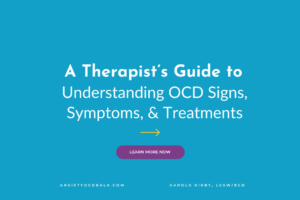Taking the first step towards healing from loss can be daunting, but ‘Navigating Through Sorrow: A Comprehensive Guide to Grief Recovery’ is here to help you understand the steps in your journey. This guide provides compassionate and practical insights into grief, helping you understand the tools you will need to navigate life after loss. Whether you’re dealing with the death of a loved one, a painful breakup, or any other life-altering event, this guide is a beacon of light in your darkest moments, illuminating the path to recovery.
Mindful Stress & Anxiety Management www.anxietyocdbala.com
Grief Recovery Method , unlike other grief management approaches, doesn’t simply mask the pain or hurry you through a process. Instead, it guides you towards compassionately and effectively confronting your grief, understanding it, and ultimately moving through it.
In my exploration and experience of various healing strategies, I came across the emotionally transformative Grief Recovery Method. This method distinguishes itself from others by delving deep into your sorrow rather than merely cloaking the pain or hastening your journey through it. It guides you to face your grief head-on, to understand and navigate it with courage, patience and compassion.
A salient feature of the grief recovery method is its emphasis on achieving emotional completion. It invites you to fully channel your emotions, to refrain from suppression or evasion. This candid confrontation cultivates a profound comprehension of your grief, forging a pathway to identifying and completing feelings of loss, abandonment, or betrayal.
Additionally, this approach offers a custom-made action plan that aligns with your distinctive grieving process. It refuses to confine you to a standard mold; it respects your personal journey and tailors the recovery process to your specific needs. It acts akin to a compass in the thick forest of grief, bestowing clarity amidst the muddle of despair and agony.
One of the most compelling aspect of this method is the sense of hope it nurtures. It reassures us that, although grief may be an inevitable part of life, it need not be a perpetual sentence to our unremitting sorrow. Through this method, we acquire the ability to bear our loss without allowing it to eclipse our potential for experiencing life, love, and joy anew.
Grief recovery method offers a compassionate and potent pathway to understanding and healing from grief. It serves as a lighthouse in our darkest hours and a guide towards a future where grief no longer monopolizes our perception and existence. You will learn to recover from your grief with deep respect for your loss while regaining your connection to a life you can value and care about.
Grief recovery method lays out a clear, systematic and achievable method for recovery as follows:
- Grief Recovery Method emphasizes the importance of diving deep into one’s sorrow rather than avoiding or covering up the pain.
- It encourages individuals to face their grief head-on, fostering understanding and resilience.
- The method focuses on achieving emotional completion, encouraging individuals to express their emotions fully rather than suppressing them.
- It offers a personalized action plan that aligns with your unique grieving process, rejecting a one-size-fits-all approach.
- This method provides guidance and clarity in navigating the confusing and often overwhelming journey of grief.
- A key aspect of the John James method is the sense of hope it nurtures, reaffirming that although grief is a part of life, it is not a permanent state.
- Through this method, individuals gain the capacity to carry their loss without letting it overshadow their potential for experiencing joy and love again.
- In essence, the John James grief recovery method is a compassionate and effective pathway to understanding and healing from grief.
The Grief Recovery Method Handbook sets forth a step-by-step recovery program as follows:
- Acknowledgment – Recognize and accept the reality of your loss. This initial step is crucial in setting the stage for your healing journey.
- Exploration – Delve into the nature of your unique relationship with the individual or situation you lost. This involves exploring your unique emotional attachments, expectations, and unrealized dreams.
- Expression – Articulate your feelings and thoughts about the loss. Whether through writing, speaking, or creative expression, this step encourages the release of pent up emotions.
- Acceptance – Learn to accept the finality of your loss and the range of emotions that comes with it. This includes feelings of regret, guilt, sadness, anger, and even relief.
- Forgiveness – Forgive yourself and others involved in the loss. It’s important to release any resentment or guilt that may be hindering your healing process.
- Completion – Complete any unresolved emotional communications. This might involve saying goodbye to your old life and welcoming new experiences.
- Reconciliation – Reconcile with your new reality. This doesn’t mean forgetting about your loss, rather it’s about integrating your loss into your life and moving forward.
Remember, the journey to recovery from grief is as individual as our fingerprints. Some steps might take longer than others, and that’s perfectly okay.
We’ve delved into the profound journey of grief recovery, examining a seven-step method as outlined in The Grief Recovery Method Handbook. The journey commences with the acknowledgment of one’s loss, moving forward to explore the unique relationship and emotions tied to the loss. We’ve also emphasized the importance of expressing these feelings and accepting the finality of the loss. The process continues with forgiving oneself and others, concluding any unfinished emotional correspondence, and finally reconciling with the new reality. Remember, this journey is deeply personal and varied – it’s totally fine if some steps take longer than others. What is most important is to begin your journey and recover from the pain held in incomplete emotion. Warmest Regards, MSAM

